Papers by Carlos Rosa-Jiménez
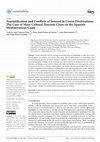
Sustainability
Tourist demands and the ensuing commodification of habitability in cities have led to the emergen... more Tourist demands and the ensuing commodification of habitability in cities have led to the emergence of resistance movements. This study aims to define patterns in touristified cities by measuring the presence of citizen initiatives, together with tourism intensification and related socio-demographic variables. All the indicators have been tested in the Mediterranean port cities of Barcelona and Malaga as they lead the cultural offer. Both municipalities have been analysed at census-section level and show a common urban pattern: the Airbnb offer has spread out in the old town in direct competition with traditional accommodation and replacing long-term rentals. Statistical analysis reveals a significant correlation among citizen initiatives with tourism services, which are the driver mechanisms behind the movements. Cluster maps show a clear centre-periphery pattern according to the tourism intensification set with high coefficient values for tourist accommodation. Bivariate spatial a...
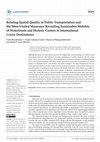
Sustainability
Museums are main tourist resources for independent cruise passengers in cultural cruise destinati... more Museums are main tourist resources for independent cruise passengers in cultural cruise destinations. However, their influence on cruise destinations is scarcely analyzed. The aim of this paper was to focus on two questions: What distribution of museums facilitates a sustainable mobility of cruise tourists in balance with urban needs? And which factors affect the potential use of both means of sustainable travel—soft mobility and public transport—at cruise destinations? The network topological features of main museums were analyzed to compare similar features among tourism destinations. A topological study based on the model of the three urban fabrics was related to the objective quality of PT. This allowed for a greater walkability or potential use of PT to be estimated. The results allowed for a diverse sample of cultural tourism port cities with cruise activity to be classified in three centralized levels and two decentralized ones. Results indicated that centralized networks are...
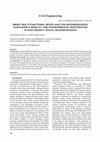
Architecture and Engineering
Introduction: Outdoor parking lots have been a common and cost-effective solution for private mob... more Introduction: Outdoor parking lots have been a common and cost-effective solution for private mobility in European social housing districts built between the 1960s and 1980s, but this solution has significant, particularly environmental and spatial, impacts. The future of urban mobility requires changes to an electrified community model, based on shared vehicle fleets. Purpose of the study: We aimed to analyze the transport, social, and environmental improvements of a smart multi-functional micro-hub for neighborhoods — a theoretical proposal designed to facilitate the transition toward a decarbonized city. Methods: The literature is therefore reviewed and a case study of the city of Malaga is provided. Results: On the one hand, the findings show the environmental, economic, and spatial advantages of this model compared to traditional underground parking lots. On the other hand, the paper proposes the design characteristics that could be adopted by a particular type of buildings and...
This list play a part in the article "A Literature Review on Migrations Related to Tourism: ... more This list play a part in the article "A Literature Review on Migrations Related to Tourism: Clarifying a Controversial Conceptual Framework". In this list, it can be found a review of a sample of 109 articles objectively selected from top quality journals specifying the terms employed and the main themes covered.
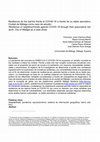
La pandemia del coronavirus SARS-CoV-2 (COVID-19) ha supuesto un desafío mundial en las ciudades ... more La pandemia del coronavirus SARS-CoV-2 (COVID-19) ha supuesto un desafío mundial en las ciudades a todos los niveles. Frente a este reto han surgido numerosas iniciativas vecinales con el propósito de servir de ayuda a la población con mayores necesidades asistenciales y económicas. El objetivo de la investigación es determinar si existe una correlación espacial entre la localización de iniciativas solidarias y la vulnerabilidad frente a la pandemia, con el fin de determinar niveles de resiliencia por grandes barrios a través de su tejido asociativo. La metodología se basa en un análisis espacial con Sistemas de Información Geográfica de las diferentes variables consideradas a través de cartografías de diagnóstico. El caso de estudio para el testeo de este método es la ciudad de Málaga. Las técnicas utilizadas para la recogida de datos son las plataformas webGIS Málaga Solidaria (http://picmalaga.com/covid) y platIC: plataforma de Iniciativas Ciudadanas (http://platic.es) para el ma...

Culture And Education, May 2, 2018
espanolEl acceso abierto a la informacion que permite internet tiene como contrapartida el proble... more espanolEl acceso abierto a la informacion que permite internet tiene como contrapartida el problema de la sobresaturacion de datos y fuentes. Como alternativa pedagogica en la ensenanza del urbanismo se propone un modelo colaborativo de hipermedia donde los estudiantes organizan y construyen la informacion desde las posibilidades del lenguaje hipertexto. La metodologia se estructura en tres fases: organizacion en la busqueda de informacion; presentacion de la informacion con el uso de hipermedia y valoracion del trabajo. Los resultados indican que la organizacion de la informacion en forma de web obtuvo la mejor puntuacion, si bien se debe restringir la valoracion colaborativa a aspectos subjetivos de comunicacion, mientras que los objetivos deben ser valorados por el profesor o por grupos expertos. EnglishThe counterpart to the open access to information facilitated by the Internet is the problem of the over-saturation of data and sources. A collaborative model of hypermedia is proposed as a pedagogical approach to the teaching of urban planning in which students organize and construct information from the possibilities provided by hypertext language. The methodology is structured in three phases: organization when searching for information; presentation of information using hypermedia; and assessment of the work. The results show that organization of information in the form of websites obtained the highest scores, although collaborative assessment should be restricted to subjective aspects of communication, while objective aspects should be assessed by the teacher and by groups of experts.
La actividad del turismo y el ocio iniciada en el primer tercio del siglo XX ha generado amplios ... more La actividad del turismo y el ocio iniciada en el primer tercio del siglo XX ha generado amplios tejidos urbanos que se han ido consolidando como metrópolis. Espacios convertidos en auténticas colmenas para la vida del "homo ludens" contemporáneo
Jornadas Sobre Investigacion En Arquitectura Y Urbanismo Iau 2009 Pag 18, 2009
Litoral Ordenacion Y Modelos De Futuro Iv Congreso De Ingenieria Civil Territorio Y Medio Ambiente 2010 Isbn 978 84 380 0430 2 Pags 58 59, 2010
Las Revistas De Arquitectura Cronicas Manifiestos Propaganda Actas Preliminares Pamplona 3 4 Mayo 2012 2012 Isbn 978 84 92409 39 6 Pags 679 686, 2012
Jornadas Andaluzas De Patrimonio Industrial Y De La Obra Publica Jornadas Andaluzas De Patrimonio Industrial Y De La Obra Publica 2012 Isbn 9788469532430 Pag 66, 2012
La costa sur de Granada y Málaga cuenta con uno de los paisajes históricos más singulares de Euro... more La costa sur de Granada y Málaga cuenta con uno de los paisajes históricos más singulares de Europa derivado del cultivo de la caña de azúcar y su industria de explotación. De este amplio territorio litoral nos centramos en la experiencia del estudio y trabajo sobre la Vega de Motril-Salobreña.
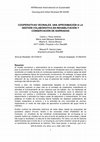
WPS Review International on Sustainable Housing and Urban Renewal, 2016
El modelo económico y administrativo de la cooperativa de viviendas, desarrollado para la promoci... more El modelo económico y administrativo de la cooperativa de viviendas, desarrollado para la promoción de viviendas con condiciones ventajosas para sus propietarios, haconstituido un modelo de éxito en numerosas experiencias, un sistema capaz de eludir algunos problemas típicos de la promoción convencional. Sin embargo, la mayor partede las cooperativas de promoción se extinguen una vez conseguido el objetivo de la obtención de las viviendas, por lo que el potencial del modelo colaborativo no seprolonga más allá de este hito.Frente a esto, los modelos residenciales basados en el llamado co-housing (covivienda) suponen un paso más en el concepto de cooperativa, extendiendo suactividad al funcionamiento de los colectivos que los habitan. Así, los habitantes de una comunidad co-housing podrán disponer de beneficios como la obtención deservicios con precios y condiciones ventajosas, o la disposición de espacios de esparcimiento o actividad con bajos costes de adquisición y mantenimiento. E...
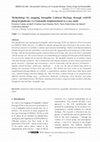
Proceedings HERITAGE 2022 - International Conference on Vernacular Heritage: Culture, People and Sustainability
The identification and cataloguing of intangible cultural heritage (ICH) was defined in Paris Con... more The identification and cataloguing of intangible cultural heritage (ICH) was defined in Paris Convention by UNESCO (2003). However, it is difficult to identify and map this type of heritage in the territory due to the lack of consensus to establish a common representation methodology. Similar technological platforms identify and geolocate the stakeholders concerned about the safeguarding and transmission of this kind of heritage, with the aim of putting together memories from each heritage item, but not the direct relationship with the specific site. This research focuses on a methodology for mapping ICH through webGIS platforms on a local scale, taking into account the following issue: the intangible elements as an attribute related with other heritage categories. This is achieved by collecting the memories of each resource generated by agents involved —citizenship and associations— and its relationship with the physical environment —tangible cultural heritage: architecture, landsc...
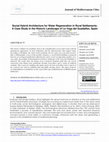
Journal of Mediterranean Cities
This article combines two problems such as the eutrophication of seas and oceans with the spontan... more This article combines two problems such as the eutrophication of seas and oceans with the spontaneous appearance of rural settlements and the infrastructures that support them. According to Koolhaas, the rural world constitutes the new space for work and research. After a bibliographic review of the possible strategies, a social hybrid building is proposed between an ecological purification infrastructure and a social recompositing artefact. As a case study, the problem of dissemination in historic landscape of the Vega del Guadalfeo is analysed. The results show the design of an ecological treatment plant that can recycle wastewater from illegal rural settlements through worm filters and a system of artificial wetlands. This is part of a building that makes up for the lack of facilities that is typical of the scattered one with an exhibition hall and public meeting spaces. The paper proposes recommendations to institutions on the scope of this type of infrastructure in Mediterranea...
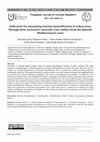
European Journal of Tourism Research
Clustering of tourism-related activities leads to tourism gentrification because of urban tourism... more Clustering of tourism-related activities leads to tourism gentrification because of urban tourism. This study proposes a methodology for identifying pattern of tourism intensification in cities. The main objectives were to conduct an in-depth measurement of tourism intensification and to consider the conflict of interest between stakeholders involved. The proposed indicator system is based on several variables measured by neighbourhoods as territorial units: citizen initiatives, population and tourist accommodations and facilities. All indicators were tested in two Spanish port cities: Malaga and Valencia. Geographic Information System mapping showed common patterns in both cities, such as tertiary use concentrated in the old town, new tourist offers around it, and emerging clusters far away. Statistical analysis showed a high spatial correlation between neighbourhoods with several citizen initiatives and a wide range of Airbnb listings or cultural facilities. The spatial analysis a...
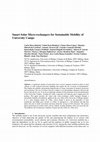
IOP Conference Series: Materials Science and Engineering, 2020
A significant number of universities have several campuses located in urban or rural settings, or... more A significant number of universities have several campuses located in urban or rural settings, or with scattered university buildings that require the use of means of transportation. This implies the mobility and potential displacement of a large community of students, professors and researchers. The use of electric bicycles (e-bikes) is an intermediate alternative between the bicycle and electric cars. It can be an important stimulus for the promotion of the decarbonisation of the University Campus, avoiding the traffic congestion and reducing space requirements for parking. This paper presents the smart solar micro-exchanger model managed through a sustainable mobility web platform, applied to the case study of the University of Malaga (Spain). It is a solar charging station for e-bike, whose design is based on the principles of solar architecture (providing great security to e-bike). It managed by a web platform and app that allows the user to make reservations and learn about th...
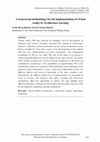
6th International Conference on Higher Education Advances (HEAd'20), 2020
Virtual reality (VR) has achieved an adequate level of development in education and research in h... more Virtual reality (VR) has achieved an adequate level of development in education and research in higher education The training in Architecture requires a reflection on the incorporation of new design technologies at the Degree and Master’s level, due, in part, to the dissatisfaction of the students with the poor implementation of these technologies. The pedagogical possibilities of VR are very high. The aim of this paper is to propose a transversal methodology for several subjects in the same semester. It consists of the virtual recreation of a work of relevant architecture in the history of contemporary Architecture. The possibilities of implementing VR in the architectonic subjects are analyzed. This methodology takes advantage of the potential of this technology to create a transversal educational activity, for different subjects and areas of knowledge in the same academic year. Subsequently, the different phases for its implementation are described in terms of activities and scen...
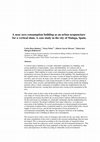
IOP Conference Series: Materials Science and Engineering, 2017
A vertical slum is defined as a socially vulnerable community in a building, with serious problem... more A vertical slum is defined as a socially vulnerable community in a building, with serious problems of functionality, safety and habitability. It is related with an important level of physical degradation, and a precarious socioeconomic situation of its occupants. Their inability to create a real community for proper and mandatory maintenance increases the physical deterioration of the building. The abandonment of the original owners of the houses can cause a system of illegal occupation and illegal activities, and viceversa. In many cases, the new occupants are the main interested in maintaining the building in a state of precariousness in order to avoid any attemp of renovation. These security and habitability problems often extend outside the building and they affect a whole community of neighbors within the neighborhood who feel threatened and insecure, causing their rejection and a strong social segregation in the area. This article wants to show some of the results from a research work developed on a case study of vertical slum in the city of Malaga, in Spain. In this context of marginality previously described, the research project explores different alternatives for the renovation of a building, its vulnerable community and the neighbourhood in which it is inserted. The project stablishes four major objectives: (a) a physical renovation of the building, (b) social transformation in a disadvantaged environment, (c) functional evolution-from a residential model to a new hybrid model with a mixed supply of social services, and (d) the incorporation of new parameters of environmental sustainability that improve the energetic behavior of the building (transforming it into a building of almost zero consumption). The research closes with a series of strategies and results for the case study. However, the main contribution of the work is related to the research methodology that has been developed. This is structured according to the four principles of integrated urban renovation, based on a physical, social, economic and environmental perspective. This methodology and results have been explained so that they can be transferred to other areas and experiences of urban recycling in vulnerable social environments.


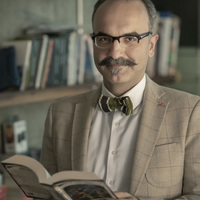


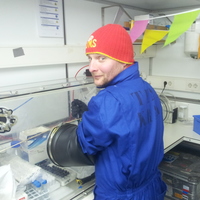
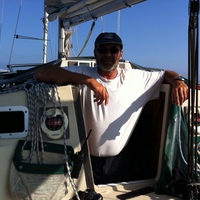




Uploads
Papers by Carlos Rosa-Jiménez